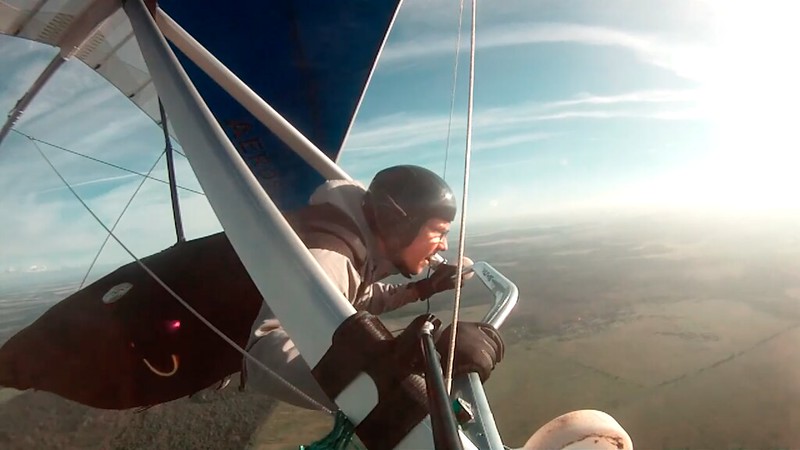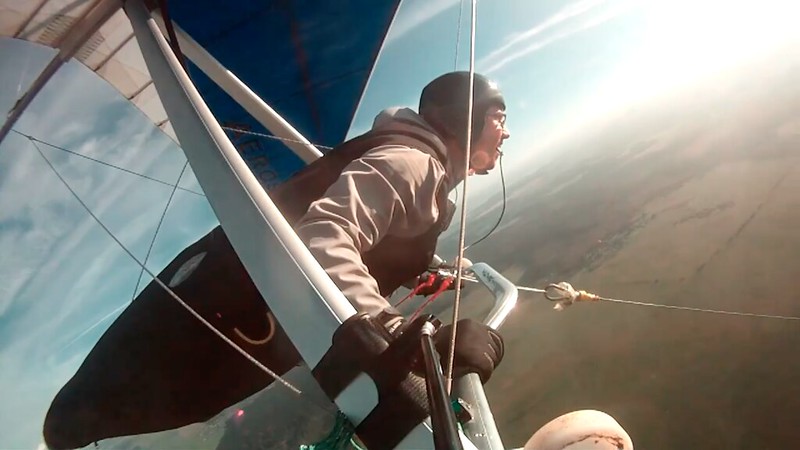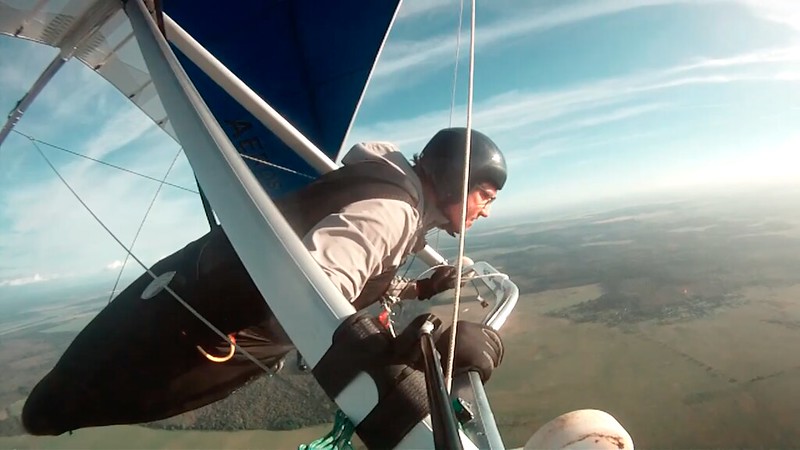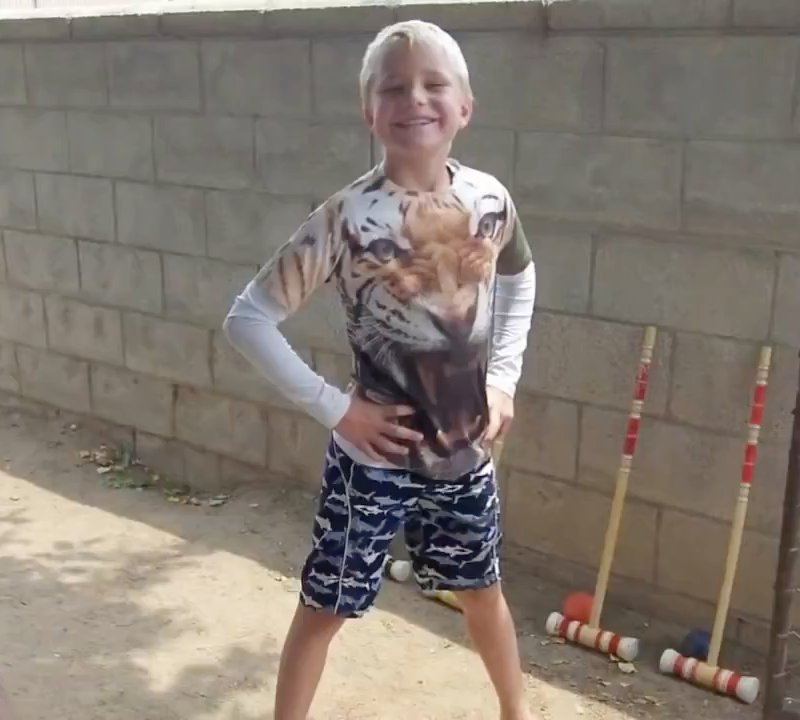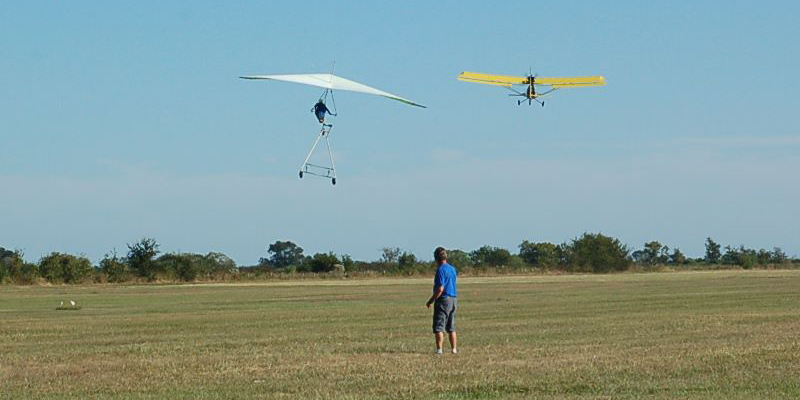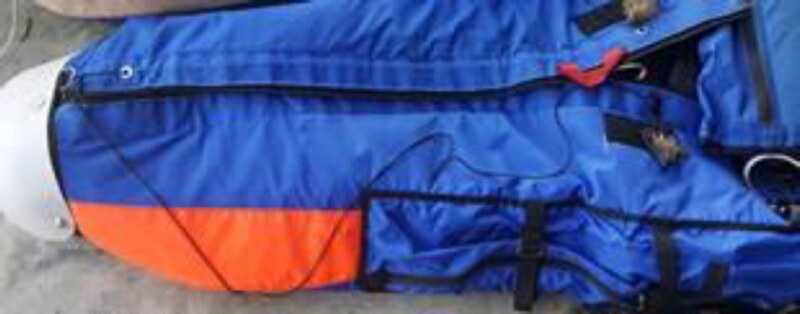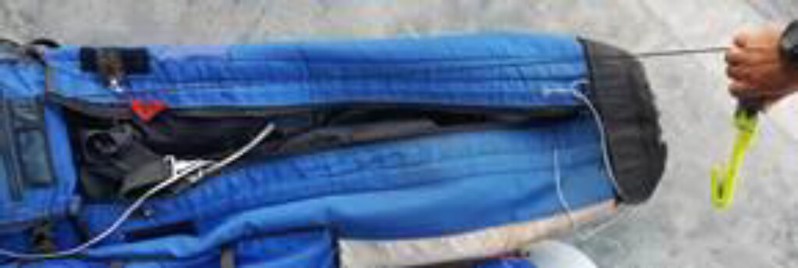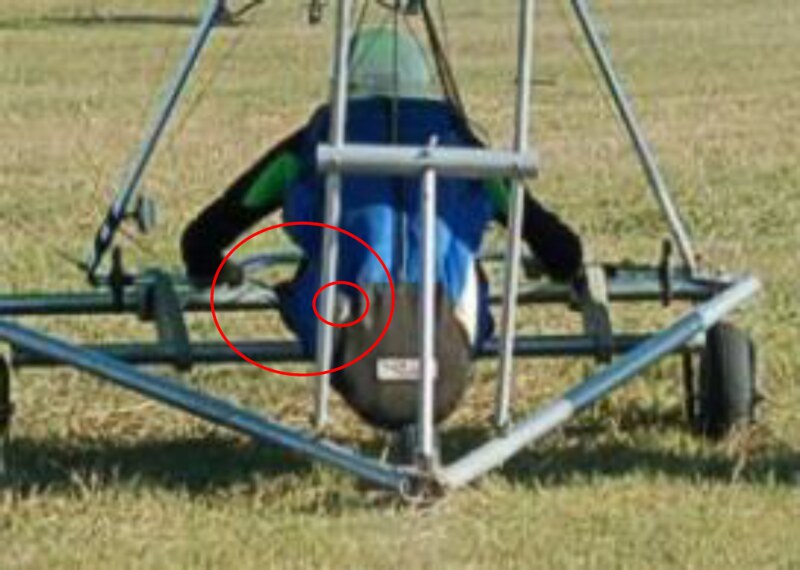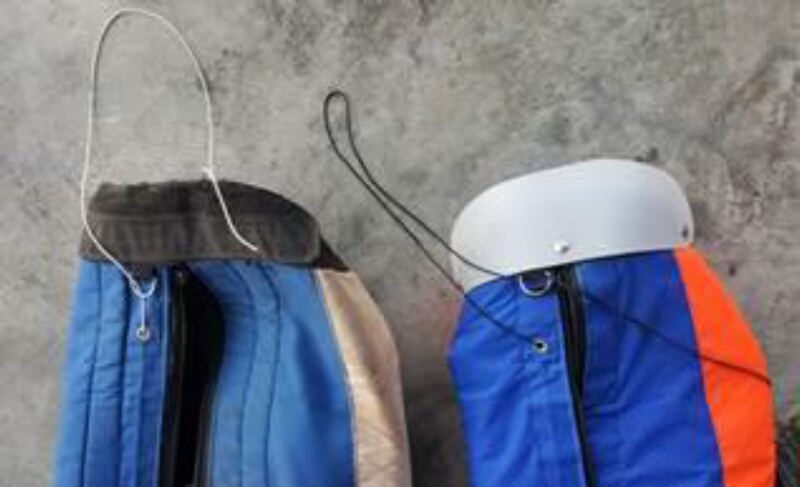http://www.hanggliding.org/viewtopic.php?t=34876
Jeff Glidewell - R.I.P.
Jim Gaar - 2016/11/09 21:38:42 UTC
Thanks Jay. Sorry to hear about Jeff. I met him years ago at small airport NW of Lake Pamona. Nice guy. I believe he was flying a Pliable Moose then with "Easy Rider" on the wings.
Hay, what kind of wing was he flying? Do you know what kind of release he used?
Something within extremely easy reach.
Do you know if he was using a weaklink?
- Undoubtedly the one with the best known and accountable safety record (in my personal books anyway).
- Why are you asking? What possible relevance could it have had with respect to this incident?
I'm sure the pilots here...
In Jack's Living Room - and not on any other forum.
...would like to know as much as we can so that we can remain safe.
So that you can REMAIN safe? If you're all already safe - and you all so very obviously ARE - why do you need to know anything about this crash?
It sounds like Jeff would be the kind of guy that would be happy to share.
And we had so much sharing from him BEFORE the fatal crash.
Again, sorry for your loss.
Chin up, good man.
Sam Kellner - 2016/11/10 14:45:27 UTC
Re: Jeff Glidewell crash witness
My Name is Jay Glidewell He went out about 1/2 mile and was up about 120' approx. .
Hello Jay, So sorry for the loss of your bro.
How do you know it was his bro?
Thanks for posting here.
Where so many others can't - and those who can are under constant threat of having their topics locked down and posts deleted if Jack doesn't find them suitable for his Living Room.
It could help many of us.
http://farm9.staticflickr.com/8143/7462005802_bbc0ac66ac_o.jpg

I never met Jeff but remember the name.
The quote/ portion of your report that don't add up to me.???
I didn't think his name was really Jay Glidewell either.
Usually, being 1/2mi out, the glider is well above 120'.
Yeah, usually when the glider's a half mile out from a stationary winch the glider's MUCH higher.
Can you describe how the tow line was attached to the glider?
http://www.ushawks.org/forum/viewtopic.php?f=17&t=1081
Platform towing /risk mitigation / accident
Sam Kellner - 2012/07/03 02:25:58 UTC
No, you don't get an accident report.
Was it attached only to the pilot?
Was it attached to the pilot and to the keel of the glider?
RIP Jeff.
Thanks again.
Sam
Suck my dick, Sam.
2016/11/10 15:10:30 UTC - 3 thumbs up - Jim Gaar
Figures.
Jim Gaar - 2016/11/10 15:09:49 UTC
In this accident the pilot was towing behind a static wench, as described by Jay to be a home made spool attached to the drive wheel of a car on a jack stand. I assume there were no tension devices or pressure gauges.
Gotta make sure the tensions and pressures are right...
029-04917
http://farm4.staticflickr.com/3735/13746338404_0b90a8007d_o.png
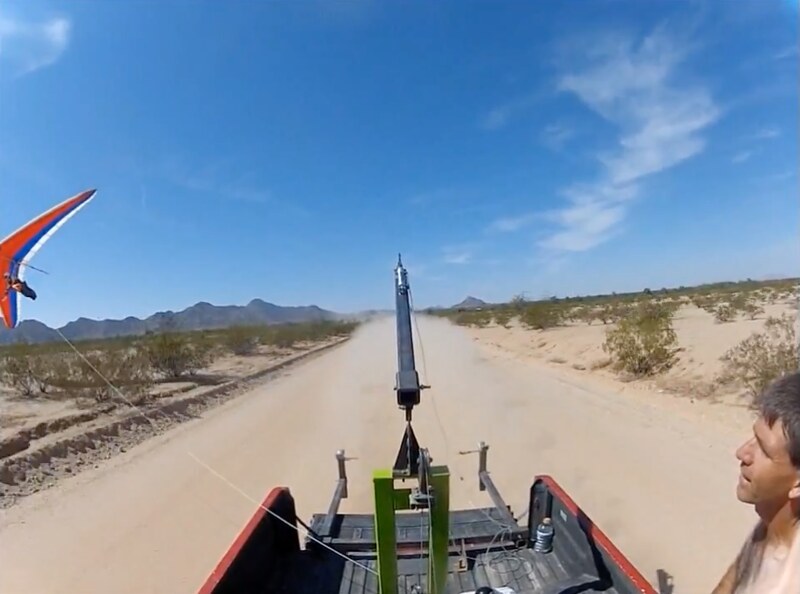
...for a really safe tow.
This is a whole 'nuther ball game in the towing world. Let's not compare apples to bowling balls.
The wing was a Pliable Moose. It's at least a 30 year old wing. I think it's even cantilevered. I can't find a picture of one. Ken?
There was 5000 feet of towline. How many feet were on the ground at the beginning of the tow? What was this towline made of?
Something nice and stretchy to help keep the tension constant.
Is this picture getting clearer for you all?
Jay it sure would be good to see the launch video.
flakey - 2016/11/10 15:42:51 UTC
Huntington Beach
Sorry for your loss
40 year old modified standard wing.

I'm guessing nothing to write home about with respect to energy retention.
David Botos - 2016/11/10 17:56:03 UTC
Aerotow and surface tow are no doubt different animals, each with some of their own unique characteristics...
Yeah, a Tad-O-Link won't kill a surface driver. Absolutely deadly to Dragonfly drivers however - if it's on a SOLO glider. It pretty much guarantees that the front end release will be rendered inoperable and the tug will be stalled if he tow's straight or have it's tail pulled around out of control when the glider's flying away from the tow with its pilot trying to fix a bad thing instead of actuating his easily reachable bent pin pro toad release.
...but the phenomenon of suddenly going from towed flight to free flight at a pitch attitude that causes a stall in free flight seems largely the same.
http://ozreport.com/forum/viewtopic.php?t=24846
Is this a joke ?
Jim Rooney - 2011/08/28 10:15:12 UTC
Oh, in case it's not obvious (which it doesn't seem to be), once someone starts telling me what the "sole" purpose of a weaklink is, I tune them out as they have no clue what they're talking about.
Weaklinks are there to improve the safety of the towing operation, as I've stated before.
Any time someone starts in on this "sole purpose" bullshit, it's cuz they're arguing for stronger weaklinks cuz they're breaking them and are irritated by the inconvenience. I've heard it a million times and it's a load of shit. After they've formed their opinion, then they go in search of arguments that support their opinion.
Jim Gaar - 2016/11/10 18:15:19 UTC
Not when the wing is a cantilevered 30+ year old hang glider on a static wench with no pressure or tension gauges and inexperienced "wench" operators.
I love that we can all go fly as we wish here in the US. I just wish Jeff had reached out to some one with more experience so that he could be doing what he wants and still have a beer with his brother after he's done.

Like Sam Kellner, Quest, Lookout, US Hang Gliding, Inc., Mission Soaring Center, Davis's Risk Mitigation Committee, Peter Birren, Steve Exceptionally-Knowledgeable Wendt, Dr. Trisa Tilletti... Lotsa these fine operations and individuals who are always weighing in after all these tragedies and setting everybody straight on things.
Jay Glidewell - 2016/11/10 18:38:36 UTC
only the pilot, up by his shoulders and then under the bar and attached to his crotch area. He was talking about how you undo one first then the other because of how it changed your pitch or angle of the line or something.
Good thing he wasn't using one of those Koch two stage chest crusher jobs. He could have had his chest crushed.
He was certified in it...
Really?
Jeff Glidewell - 25340 - H4 - 1981/03/01 - T. Dolsky - FL AWCL CL TUR
By whom?
...and apparently was well acquainted with the methods.
http://ozreport.com/forum/viewtopic.php?t=24846
Is this a joke ?
Jim Rooney - 2011/08/24 16:26:09 UTC
Welcome to towing.
We've been doing this a long time and are quite familiar and comfortable with our processes.
http://4.bp.blogspot.com/-bRrpHNa68iY/UQ6Pv9gRZyI/AAAAAAAAjTg/Hc22bx5122Q/s2048/20943781_BG1.jpg

He had a pull string release that was out 4 or 5 feet then also the two quick release points mentioned earlier. Seemed to unhook great.
Yep, just as effectively as a standard aerotow weak link.
Both latches open quick release out front had worked and the break point strings looked great.
Not seeing any problems then. Can we talk about something else now?
Dave Pendzick - 2016/11/10 18:43:11 UTC
So the tow line was not attached to the glider in any way, only to the pilot & in two locations? I am not familiar with that method.
The glider's NEVER connected in surface tow operations - save for skimming training stuff.
Jay Glidewell - 2016/11/10 18:48:51 UTC
He had a scale on some pulleys to tell what to hold it at. I think there was a camera on that too and I will try to get a copy of that. He had some white rope and some yellow, Braided and made the loops by taking the ends and sticking them back up the middle of the rope a foot or more to hold them...
Almost certainly polypro.
He had out about 4400 feet of line I think. He was getting all this from somewhere he wasn't just dreaming it up.
Sounds like heavy Hewett influence.
I'll try to get the video's on here where they can be seen. Like I said, I don't have the release or crash but that might be good because I sure didn't need to see that twice.
If we'd had a video of Zack Marzec buying the farm at the conclusion of his inconvenience whipstall and tumble our job would've been a thousand times easier.
Jay Glidewell - 2016/11/10 18:51:21 UTC
It's a 16 min video and at the rate it's downloading it will probably be tomorrow before I can put it out.
Well, tomorrow's come and gone.
Jay Glidewell - 2016/11/10 19:03:25 UTC
Yes Dave, Correct
How's it feel to be right about something, Dave?
David Botos - 2016/11/10 22:08:21 UTC
I don't know the flying characteristics of the older glider to be able to comment on that in relation to more modern gliders.
Crap performance / energy retention. That was a major factor here.
My point was that when releasing from tow (be it aerotow or surface tow) at a pitch angle that would cause a stall in free flight, the sudden onset of drag (since the tow line force is no longer there to counteract it) and the subsequent reduction in airspeed and resulting stall would be largely the same.
Well yeah, but that's totally different from the effect of a weak link always breaking at the worst possible time, when the glider is climbing hard in a near stall situation. That's just an ARGUMENT Donnell has heard and a weak link break always increases the safety of the towing operation - PERIOD. Otherwise you're just making more of this crappy argument that being on tow is somehow safer than being off tow.
One difference with surface towing, you have some downward component to the tow line tension that goes away upon release, changing the effective wing loading (which was artificially high when the downward component of tow line tension was present).
So what? No aircraft ever got in trouble for dumping ballast - 'cept for losing capability to penetrate out from a ridge in a strong headwind, which isn't a relevant issue here.
But, that is a bit apples-to-oranges since one is a wing loading in towed flight and the other is a wing loading in free flight.
It's a total nonissue. Down vector is just the inevitable waste of towline tension one must accept with surface towing.
I think the big take away here is that while towing, you need to fly in such a way that you would keep flying in free flight, whether that transition to free flight happens expectedly (normal release) or unexpectedly (emergency release, weak link breakage).
Everybody knows that...
http://www.chgpa.org/forums/viewtopic.php?f=2&t=3600
Weak link question
Jim Rooney - 2008/11/22 22:31:35 UTC
Nail on the head Brian!
The simple fact is this. The only reason anyone even gives Tad the time of day is that they want to believe him. Why? Because they don't like to be inconvenienced by a weaklink break. That's it.
Sure, everyone digs around for other reasons to believe, but at the heart of it, it's convenience.
No one is actually scared to fly with a standard weaklink. They may say they are, but deep down inside, they're not.
Tad loves to speak of himself as a scientifically minded person. Yet he ignores a data pool that is at minimum three orders of magnitude higher than his. It is thus that I ignore him.
INSTINCTIVELY.
Jay Glidewell - 2016/11/10 22:34:53 UTC
Yes, That was mine too, Maybe he was being towed kind of on the slow side since it was the first time with this tow set up.
The more slowly he was being towed the less consequence coming off tow would've had.
At least be ready to yank that bar back if you get a break...
EVERYBODY's *READY* to yank the bar back. This asshole:
06-03114
http://farm4.staticflickr.com/3728/9655895292_f4f808fb0e_o.png
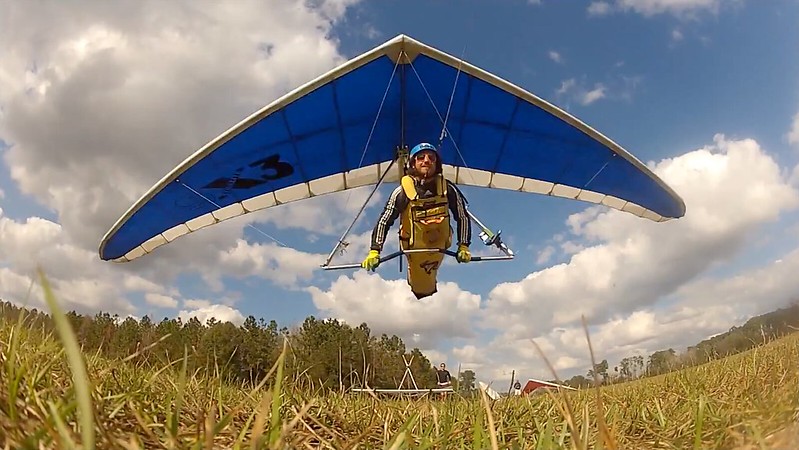
already has the bar yanked back almost as far back as possible just coming off the cart. Problem is that's not always gonna be enough to do the job. Not every abrupt and total loss of thrust is survivable for an aircraft of any flavor in all circumstances.
And the thought now occurs to me that this was quite likely a foot launch. (A launch cart isn't a factor in a safe towing system under the Twelve Steps of Donnell's Skyting Criteria.) So one must wonder if Jeff was still flying from the control tubes. I doubt it but one must also wonder why he elected to release at 120 feet with 4400 feet of line still out in brain dead conditions with everything going great.
...and if releasing, Build up your speed and take the tension off the rope before releasing.
Dennis Pagen - 2005/01
I pulled in all the way, but could see that I wasn't going to come down unless something changed. I hung on and resisted the tendency to roll to the side with as strong a roll input as I could, given that the bar was at my knees. I didn't want to release, because I was so close to the ground and I knew that the glider would be in a compromised attitude. In addition, there were hangars and trees on the left, which is the way the glider was tending. By the time we gained about 60 feet I could no longer hold the glider centered--I was probably at a 20-degree bank--so I quickly released before the lockout to the side progressed. The glider instantly whipped to the side in a wingover maneuver.


